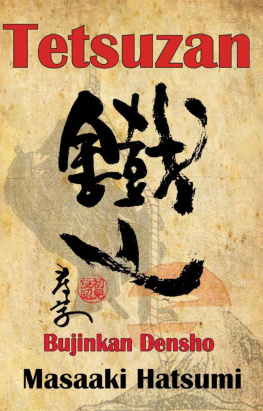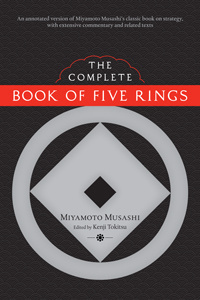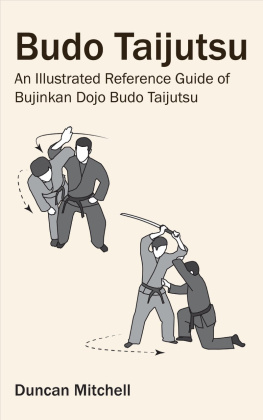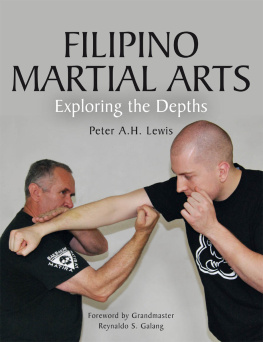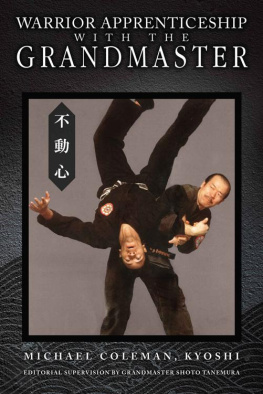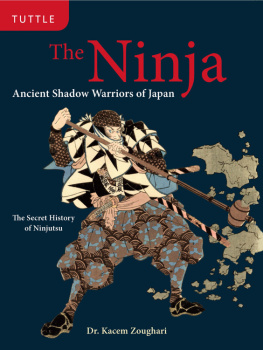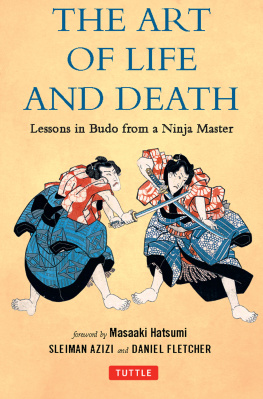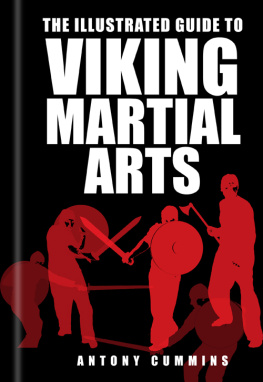
http://www.rgi.co/
Translation: Ben Jones
Original Content Editor: Donovan Vicha
Chapters one through six originally printed as issues one through six of the Tetsuzan newsletter series.
Certain editorial changes have been made from the original to improve clarity and readability.
PUBLISHED BY Resolution Group International
1996, 2004, 2014 by Masaaki Hatsumi. All rights reserved.
ISBN-13: 978-1499104295
ISBN-10: 1499104294
No part of this book may be used or reproduced in any manner whatsoever without written permission except in the case of brief quotations embodied in critical articles or reviews.
Note: The techniques described and illustrated in this book are for informational purposes only. The author and publisher of this book are not responsible in any manner whatsoever for any injury that may result from practicing the techniques and/or following the instructions given within. Because the physical activities described in this book may be too strenuous for some readers, you should check with a physician before beginning training. If you are ever in doubt as to how to proceed or whether your practice is safe, consult a trained martial arts teacher before proceeding.

Media and Publications
on the web at www.rgi.co
CONTENTS

A New Era and a New Endeavor
On the occasion of the publication of this first issue of Tetsuzan (Iron Mountain), I have a debt of deep gratitude that I would like to express. This gratitude is due firstly to Takamatsu Sensei, and to all the other Ske (Grandmasters) who have faithfully preserved our tradition for a thousand years; and secondly, to my fellow students. I also extend my appreciation to Mark Hodel and Jack Hoban for their efforts in having this newsletter published. At the same time, Id like to convey my thanks via this newsletter to all those good buy (martial arts friends) and companions who are striving to make the best of their own lives and to contribute to society through the study and practice of our art.

Ske, with a scroll in one hand, talking about the letters he received from Takamatsu Sensei, some of which lie before him.

Toshitsugu Takamatsu Sensei.
In Japan, we have begun a new era this year with the passing of the late emperor and the accession of his son. This change is accompanied with the replacement of the old era name, Showa, with a new one, Heisei. Heisei can be translated as, Becoming peaceful, calm, ordinary or simple, and signifies the renewal of the determination to maintain freedom and peace. So I would like the Bujinkan to set out into this new era with the attitude of true Heisei Warriors.

Looking at the Gyokko Ry scroll written by Takamatsu Sensei.
At the end of last year, I conducted our first Daikmysai Seminar. This was done to bring together Bujinkan buy from all over the world so that they could have a taste of this life that has lasted almost a millennium. First, to give some idea of the deep connection between Takamatsu Sensei and myself that lasted for over thirty years, I brought some of the thousand and more postcards and letters that he sent me, and also a scroll that I received from him. This scroll, written in his own hand, contains (among other things) the line of transmission of our tradition from grandmaster to grandmaster. Even without any explanation, I think that those present got an idea of the correctness and authenticity of the Bujinkan.

Part of a scroll written and painted by Takamatsu Sensei on Gyokko Ry Ninjutsu.
With my best wishes and thanks to Jack and Mark for undertaking this new enterprise, and to Bujinkan members the world over... Tetsuzan.
Highlights of the Past Year (1988)

Ske at home.
From August 1st to December 2nd last year, Ground Self Defense Forces Major Fumio Manaka, 9thdan, went to the United States. In all three places that he visitedOhio, Austin (Texas), and El Pasohe achieved three purposes: to transmit some important understanding about ninp, to teach practically and directly (these two being known in ninjutsu as speaking with both body and mind), and to enjoy the company of everyone there. On returning to Japan, he spoke to Ske about the trip. Their conversation is condensed below. (S = Ske, M = Manaka)
SWhat were your feelings about the August seminar in El Paso?
MWell, in general, I think everythings getting on well. The formsthe kamae and the techniqueswere well done, but I felt there was still something not quite natural, something imitative, in the practice there.

Fumio Manaka, 9th dan.
SI see. Its good that things are going well. But if the linking from technique to technique was unnatural, as you suggest, there must be a lot of people who havent really got the idea of what its all about!
MYes, thats right. So I tried to emphasize that the linking movements between any two techniques are made in just the same way as the linking movements between the basic techniques.
SIn the old days, we used to train very hard, remember? (And, you know, its already thirty years since you came to me to enroll as a student.) Anyway, its that space, that flow through spacebetween technique and technique, between form and form, body and body, mind and mindthat is the difficult thing. You could say that the discovery of this space is the intuitive knowing that is what the fifth dan test is all about.
Inaz Nitobe, the famous Japanese scholar who wrote the book Bushid, said that in true scholarship the important thing is to understand the spaces between the words, to read between the lines.
MIn America I also taught some of the basic moves with the sword, and long and short b (six- and three-foot staffs).
SOh, thats good. And, you know, if you get students to use weapons, you can see immediately how good they are at taijutsu. And if someone unskilled becomes completely carried away with trying to use a weapon, his taijutsu technique all goes into its handling. All the attention sort of leaks into the weapon so that nothings left behind for controlling the body properly!
Next page
